Outdoor bonsai characterized by a highly appreciated versatility, the elm bonsai is a plant as resistant as it is robust, and therefore able to withstand the interventions of bonsai art without particular problems, whether it is repotting or pruning. If placed outdoors it has deciduous leaves; vice versa, if grown indoors, typically in an apartment, it manages to keep part of the leaves. Externally or internally, it must in any case be located in a sufficiently lit point, possibly in contact with the sun, while during the winter season it must be kept away from freezing and in general from particularly harsh climatic conditions. While not manifesting specific needs, the elm bonsai it needs water on a regular basis, as long as the ground is completely dry on the surface. Furthermore, in order to avoid the risks deriving from root rot, it would be important to control the eventual appearance of water stagnation, trying as much as possible to adopt a very draining soil. Often, in fact, the bonsai that you buy in garden centers are buried in excessively compact substrates: for this reason it is advisable to repot in a short time, changing the soil and making sure that the water from the irrigation can flow out with a certain linearity. Evidently, climatic conditions, season and pot size affect the timing of irrigation (obviously, a larger pot will need more water than a small pot). In the summer, it would be important to water the elm bonsai twice a day, while in winter the frequency can be halved.
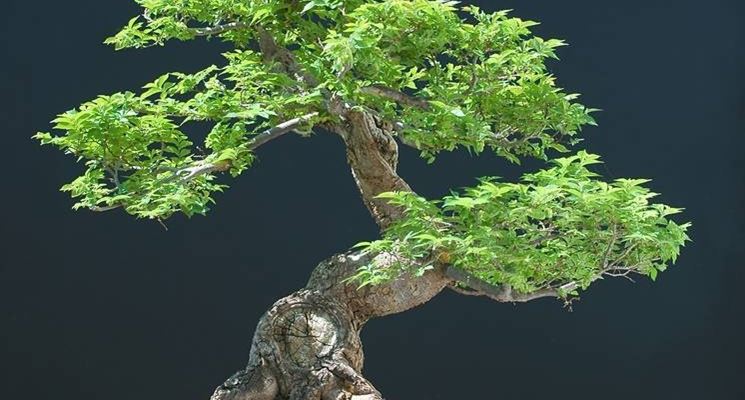
 |
Grow A Bonsai Tree Anodized Aluminum Bonsai Wire 5-Sizes Starter Set – 1.0mm, 1.5mm, 2.0mm, 2.5mm, 3.0mm (45 Meters Total) – (5 Sizes, Black) Price: on offer on Amazon at: € 17.99 |
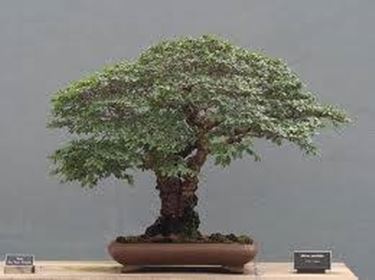 Repotting, on the other hand, as well as after purchase, must be done around the end of February or early March, when the vegetative rest period is about to end and the plant is ready to grow again. In addition to replacing the pot, it is also necessary to reduce the woody roots, and to place a grid (or simply a bit of gravel) on the drainage holes in order to build a protection against animal parasites. Furthermore, this grid will also be used to prevent soil from being unnecessarily dispersed during watering. Speaking of the latter, a mixture consisting of twenty-five percent peat, twenty-five percent sand, and fifty percent universal soil is all right. As for the aforementioned animal parasites, the most dangerous and frequent enemies are aphids, scale insects and red spider. The scale insects reveal themselves in the form of whitish encrustations, which generally appear on the older branches. In practice, these are the envelopes of woolly material in which the animals live, and can be eliminated with a solution of pine oil to be sprayed on the foliage. A half-liter solution costs about eight euros, and can be found in any garden center.
Repotting, on the other hand, as well as after purchase, must be done around the end of February or early March, when the vegetative rest period is about to end and the plant is ready to grow again. In addition to replacing the pot, it is also necessary to reduce the woody roots, and to place a grid (or simply a bit of gravel) on the drainage holes in order to build a protection against animal parasites. Furthermore, this grid will also be used to prevent soil from being unnecessarily dispersed during watering. Speaking of the latter, a mixture consisting of twenty-five percent peat, twenty-five percent sand, and fifty percent universal soil is all right. As for the aforementioned animal parasites, the most dangerous and frequent enemies are aphids, scale insects and red spider. The scale insects reveal themselves in the form of whitish encrustations, which generally appear on the older branches. In practice, these are the envelopes of woolly material in which the animals live, and can be eliminated with a solution of pine oil to be sprayed on the foliage. A half-liter solution costs about eight euros, and can be found in any garden center.
-
bonsai
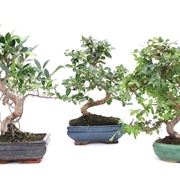 The art of bonsai is something extremely ancient and elevated, an art that also in our country finds many followers and many enthusiasts. In this section of giardino.it entirely dedicates …
The art of bonsai is something extremely ancient and elevated, an art that also in our country finds many followers and many enthusiasts. In this section of giardino.it entirely dedicates … -
Carmona
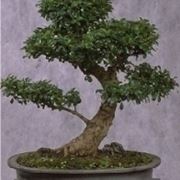 Hi, I received a bonsai as a gift and I would like to know more particular news than what I read on your site, which I think is very very useful: I can contact you or the expert in com …
Hi, I received a bonsai as a gift and I would like to know more particular news than what I read on your site, which I think is very very useful: I can contact you or the expert in com … -
Bonsai
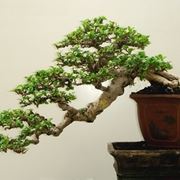 Hi! I wanted to ask one thing: I am very passionate about bonsai, but something just born and I would like to know how to make them, just take normal plants or need special plants …
Hi! I wanted to ask one thing: I am very passionate about bonsai, but something just born and I would like to know how to make them, just take normal plants or need special plants … -
Bonsai cuttings
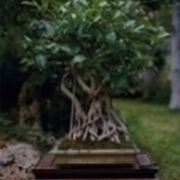 DO YOU THINK IS IT POSSIBLE TO CREATE TALEE FROM ANOTHER BONSAI? …
DO YOU THINK IS IT POSSIBLE TO CREATE TALEE FROM ANOTHER BONSAI? …
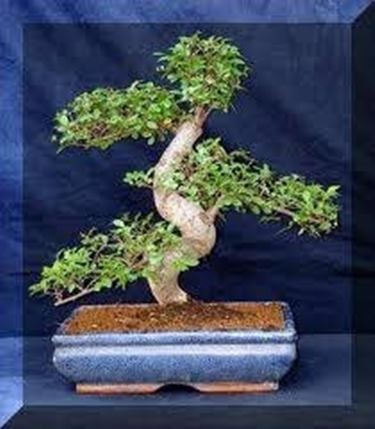 During the growing season, the elm bonsai can be subjected to corrective interventions through the application of weights, rods and wires, which are an excellent help for those who intend to put the art of bonsai into practice. The vegetative season represents the best period as it allows to act on the youngest branches, which, being elastic and flexible, are more sensitive and available for corrective interventions. To lower the branches you can use tie rods to be anchored to the vase, or copper wires, possibly coated with sheaths in order to avoid damage to the binding points of the branches, the consistency of which varies depending on the type of branch. Naturally, the shape of the plant can be modified, as well as with these tools, also with classic pruning. The most suitable period to act, in this case, corresponds to the beginning of spring or the end of autumn, that is when the vegetative rest period ends and begins. In any case, the plant is able to withstand pruning and topping without problems at any time of the year, as long as there are no particularly prohibitive climatic conditions. While the training pruning allows to give the desired shape to the bonsai, clearly taking into account the natural and characteristic bearing of the species, the maintenance pruning has the purpose of ensuring that the shape achieved is preserved over time. Finally, pinching and topping serve to ensure an excellent vegetative balance, and must be implemented when the vegetation is intense. All interventions that involve cuts and cuts must be carried out with instruments (shears and scissors) rigorously disinfected, if possible with a flame, in order to avoid potentially dangerous infections. It would be better, however, to disinfect the blades after each cut, to prevent a disease present on one branch from spreading to the other branches.
During the growing season, the elm bonsai can be subjected to corrective interventions through the application of weights, rods and wires, which are an excellent help for those who intend to put the art of bonsai into practice. The vegetative season represents the best period as it allows to act on the youngest branches, which, being elastic and flexible, are more sensitive and available for corrective interventions. To lower the branches you can use tie rods to be anchored to the vase, or copper wires, possibly coated with sheaths in order to avoid damage to the binding points of the branches, the consistency of which varies depending on the type of branch. Naturally, the shape of the plant can be modified, as well as with these tools, also with classic pruning. The most suitable period to act, in this case, corresponds to the beginning of spring or the end of autumn, that is when the vegetative rest period ends and begins. In any case, the plant is able to withstand pruning and topping without problems at any time of the year, as long as there are no particularly prohibitive climatic conditions. While the training pruning allows to give the desired shape to the bonsai, clearly taking into account the natural and characteristic bearing of the species, the maintenance pruning has the purpose of ensuring that the shape achieved is preserved over time. Finally, pinching and topping serve to ensure an excellent vegetative balance, and must be implemented when the vegetation is intense. All interventions that involve cuts and cuts must be carried out with instruments (shears and scissors) rigorously disinfected, if possible with a flame, in order to avoid potentially dangerous infections. It would be better, however, to disinfect the blades after each cut, to prevent a disease present on one branch from spreading to the other branches.
The cuts made must be oblique, precise and clean, without leaving frays, which could be easy prey for insects. Wounds, then, must be treated with a specific healing mastic, an ideal barrier against parasites.
Source: www.giardinaggio.it